New!

Format(s):
SIG Perspectives
The six articles included in this SIG 18 activity represent the diverse work and settings in which asynchronous telepractice methods are used and applied. In the first article, “Asynchronous Telepractice and Ethical Conduct,” Cohn and Cason suggest that ethical standards are applicable across both synchronous and asynchronous telepractice. Then, the second article, “The Efficacy and Utility of Constant Therapy in Post-Stroke Aphasia Rehabilitation,” by Smith and Kiran, is a tutorial describing the use of asynchronous technologies in the post-stroke aphasia rehabilitation process. The third article, “Asynchronous Telepractice in Audiology: Feasibility and Implementation” by Mahomed-Asmail and colleagues, provides readers with a three-phase model in asynchronous audiology service implementation with application in South Africa and the United States. Next, the fourth article, “Asynchronous Telehealth for Dysphagia Management: Evidence, Possibilities, & Practical Examples,” by Malandraki and colleagues, describes real-world applications of asynchronous technologies used in dysphagia treatments.
Then, the fifth article, “The Impact of an Asynchronous Intervention on Parents’ Use of Code-Based Shared Reading Strategies: A Preliminary Exploration,” by Hecker-Deel and McCarthy, presents a research study that suggests there may be no difference in the effectiveness of delivering video or audio-only asynchronous educational methods to support caregiver involvement in early literacy development. The final and sixth article, “Application of Asynchronous and Hybrid Voice Telepractice Methods” by Grillo and van Leer provides readers with a deep dive into client eligibility for telepractice and the use of mobile apps to support adherence to voice therapy. These articles create a framework for the practical use of asynchronous technologies and their impact on telepractice in the fields of audiology and speech-language pathology.
Format(s):
SIG Perspectives
The three articles included in this SIG 18 Perspectives course represent the diverse work settings and populations served through telepractice. The first article evaluates an in-person and telepractice-delivered parent-mediated intervention for autistic children. The second article investigates the administration of an assessment for auditory processing disorders via in-person and telepractice delivery. The third article describes a systematic problem-solving approach for conducting aphasia assessments via telepractice.

Format(s):
SIG Perspectives
The three articles in this SIG 18 activity were selected to provide information on the
present and future of telepractice service delivery from the perspectives of current
speech-language pathologists and graduate student clinicians.
The first article by Page, Hughes, and Woody investigates the initial perceptions
of graduate student clinicians following the implementation of telepractice. Findings
reveal themes including comparisons between in-person services and telepractice
regarding learning technology, managing environmental distractions at home, and
caregiver involvement.
The second article by Douglass, Lowman, and Causey-Upton provides a metaanalysis study on clinicians’ perceptions of telehealth across disciplines within
rehabilitation and other allied health fields. Several themes are identified, including
acceptance, lack of telehealth training, and the flexibility of telehealth.
The third article by Edwards-Gaither, Harris, and Perry presents a viewpoint for
the future of telepractice in speech-language pathology. Challenges and opportunities
for the longevity of telepractice service delivery are discussed, including consensus on
telepractice terminology, designating a service delivery model, and exploring telepractice
occupational culture.

Format(s):
SIG Perspectives
The first article in this SIG 18 activity investigates the applications speech-language pathologists (SLPs) and audiologists used most frequently during the beginning of the COVID-19 pandemic. It also discusses the main obstacles to providing speech, language, and hearing services through telepractice. Through the international distribution of an electronic survey, a total of 1,466 surveys from SLPs and audiologists from 40 countries were used for the analysis.
The second article discusses the Auditory Verbal UK's training program for prospective listening and spoken language specialist certified auditory verbal therapists delivered globally via telepractice. The article explores, from a global perspective, audiology and early intervention services and perspectives regarding telepractice.
The third article explores parents' and therapists' views of the benefits and challenges of telepractice for early intervention for children who are deaf or hard of hearing during the COVID-19 pandemic. Through survey and analysis, the article probes the views of parents, Listening and Spoken Language Specialist Certified Auditory Verbal Therapists in using telepractice to deliver auditory verbal sessions.
Format(s):
SIG Perspectives
This activity presents a variety of topics related to telepractice service provision. The first article offers a case study on the effects of a hybrid telepractice/onsite treatment program for a child who stutters. The following article discusses common technical issues encountered during telepractice and a process for managing them with English- and Spanish-speaking clients. The final article details the findings of a study on integrating technology through telepractice to support clients with dementia.
|

